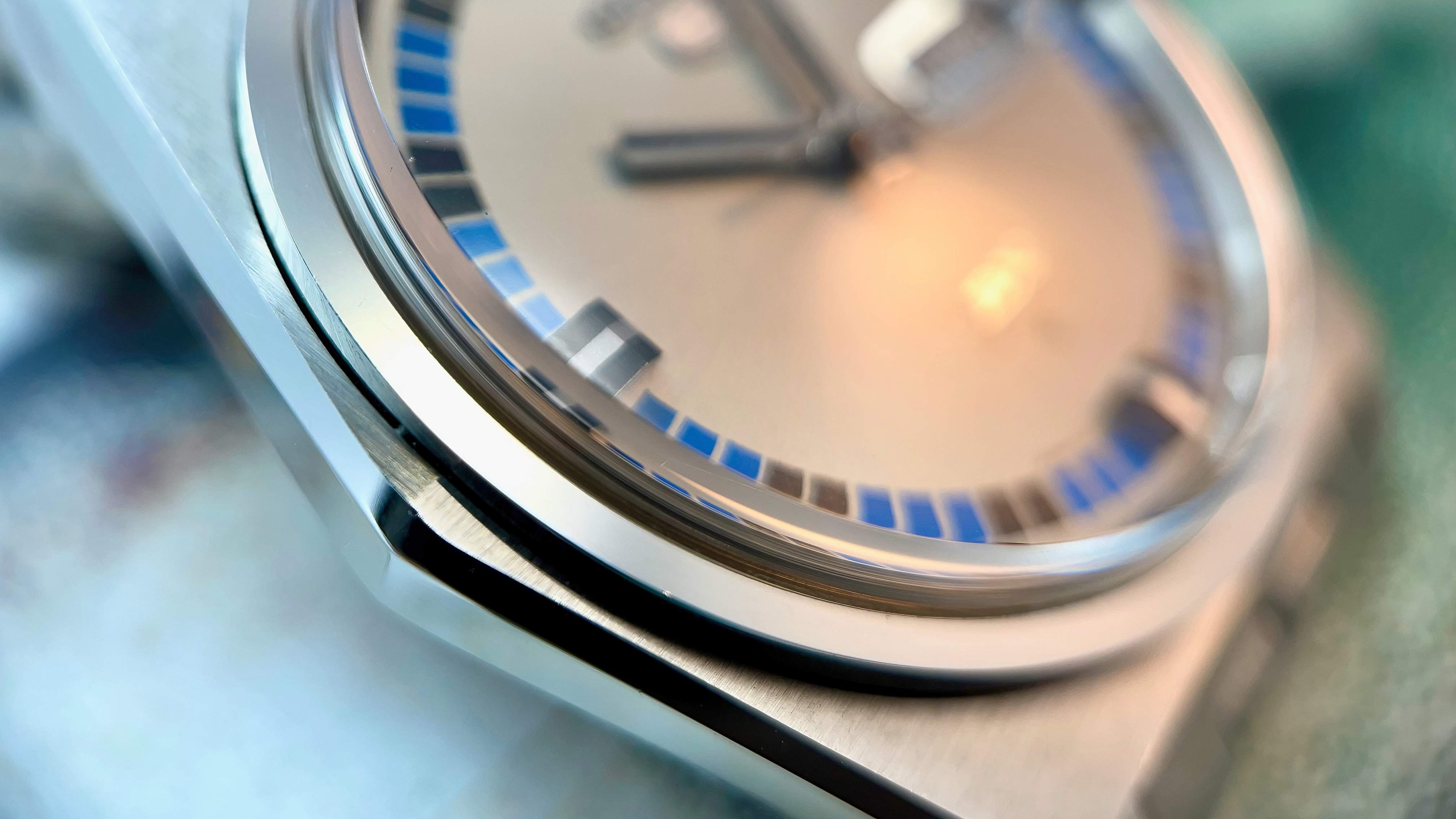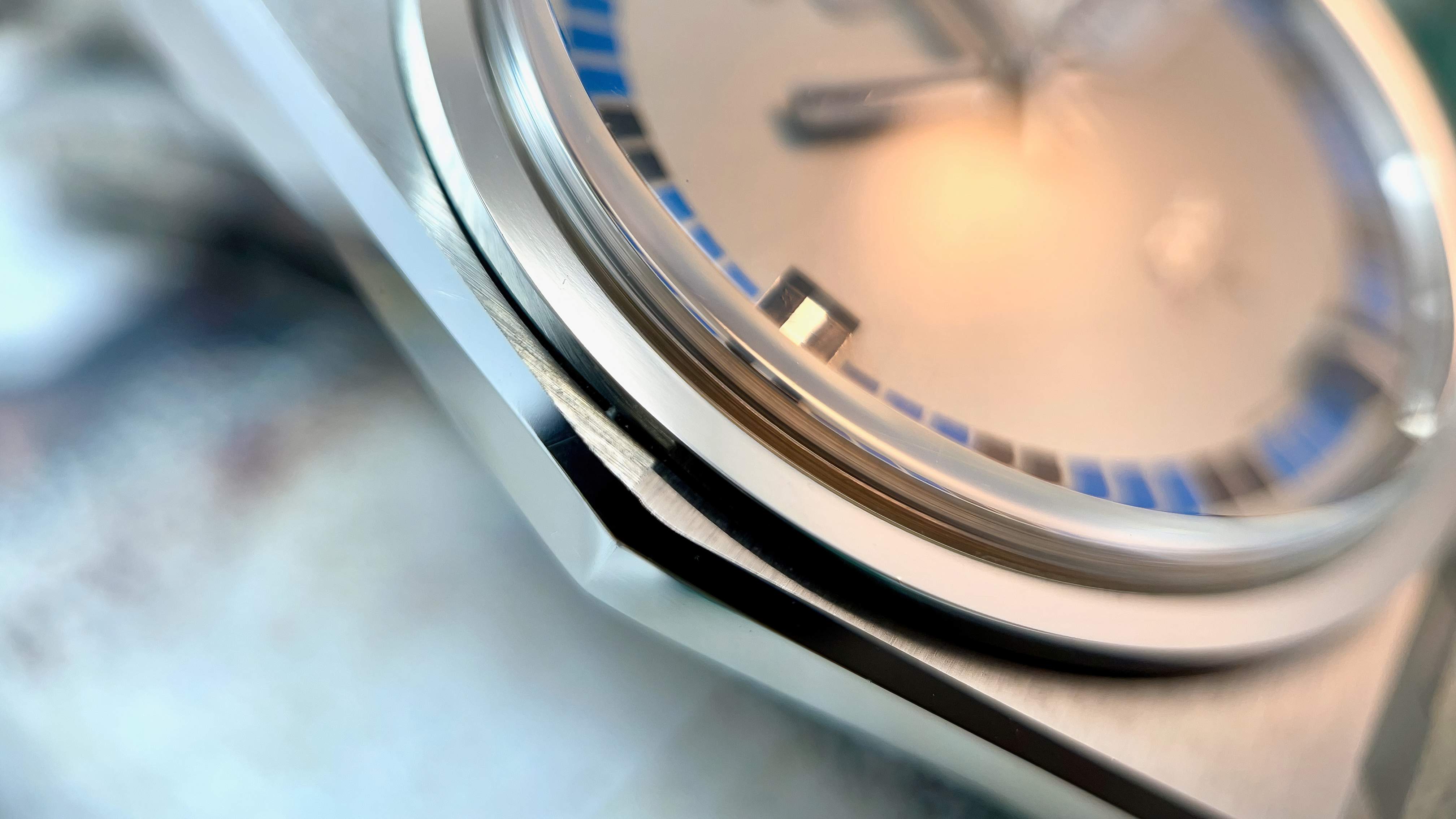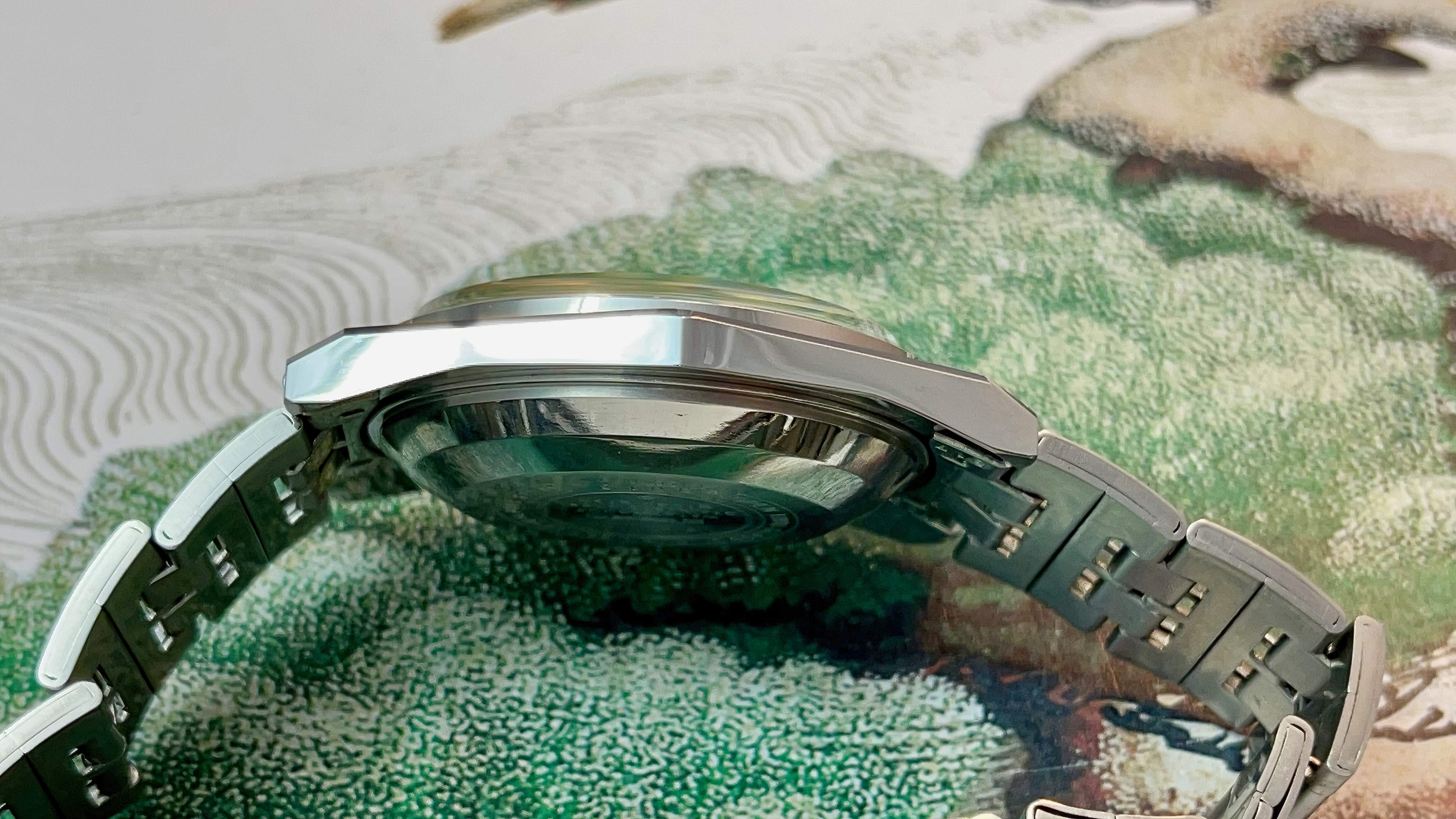
Seiko 5 DX 6106-8170 (Sold)
€ 625.00
Sold out
| About | Details | and then some |
|---|---|---|
| Manufacture | Seiko | 5DX |
| Model reference | 61-5D 256 | 6106-8170 |
| Movement | Automatic | |
| Caliber | 6106 | |
| Dial | Silver linen | Blue index |
| Case | 38x42x11mm | Steel |
| Lugs | 19mm | |
| Bracelet | Original | 6106-817 |
| Crystal serial # | Unknown | Acrylic |
| Timegrapher | Accuracy: | |
| Jewels | 25 | |
| Serial # | 89xxxx | Production: 1968-09 |
| Condition | Mint | |
| Service | Not required | |
| Box & Papers | No box | No papers |
6106 5DX
The Seiko 6106 caliber was a product line launched in the '60s and continued in the '70s, it consisted of both 5DX, Seiko 5Actus and the regular Actus - with an emphasis on styling. The particular innovative design was targeted at the baby boomers of that time but remains in demand with vintage watch collectors right up to the current day and age. It is after all about the very first Helmet design, which would be reiterated in the 6139 helmets or about the first UFO style 5Actus 8410, which would be applied to the 6138 UFO. The dial of that UFO features just the hour markers, Seiko did this occasionally, but not to the other light grey 8410 variant. To me, looking at, it signifies a nice break from tradition.
DX is an acronym for Deluxe, supposedly reflecting upon the general luxury character of the line. They were relatively affordable while still tending to offer design touches found in more expensive watches of the time, such as iridescent or textured dials and applied markers. Styling ranged from conservative to pretty extreme.
Some DX models were also offered as regular Seiko 5 but without the DX markings. But this product line evolved over time by keeping the same stand-out case design, but changing movements and jewel count. (Calibers 6106 & 70xx, 76xx). All of them however featured hacking, in contrast to their standard '5' counterparts and they were not entry level watches due to design and build quality of constituent parts and movement.
It’s a bit quircky this watch.. quickset the date by pushing the crown and opposite to that, the day, by pulling it and turning. Winding this watch you do by a gentle Seiko shake, forsaking the crown. That’s why it is so recessed of course, you are not supposed to ever have to wind it.
This watch still performs it’s tricks after more than fifty years, and looking good too. there are not that many watches that can do the same, let alone have a modern grammar of design. It can stil be your everday watch.
So this hip(ster) product line mainly used 6106 and 7019 movements - there may be others, but these two are the most common. Both were reliable automatic movements. The only real difference between the two movements is that the 6106 used two screws to hold the winding rotor in place. Date languages used were English/Japanese only. Strangely enough then the Latin word Actus used for this watch, meaning a unit of length, progress, moving through, series/sequence, act, performance (of play), delivery, action, or deed...
The 23 jewel 6106 hackable but no manual wind (!) movement was introduced in 1967 with its first iteration, the Kanji only day date 6106A with sweeping seconds and a power reserve of 46h. It was revised twice in the next two years adding a day quickset, the 6106B appearing in 1968 and the 6106C in 1969. The 6106C only has the dual language day wheel, Kanji and English. All three however have the quickset feature to set the day and date by pushing the crown in by two discrete steps (first push date, second harder push day). It is of course very practical to not have a big crown if pushing and time adjustments are the only things you will ever do.














